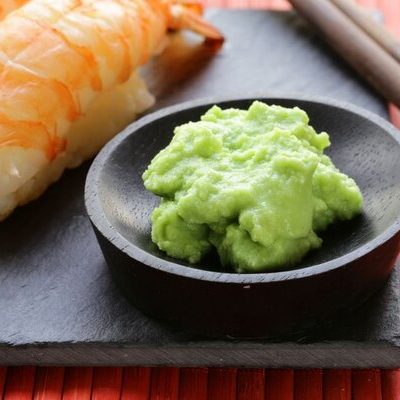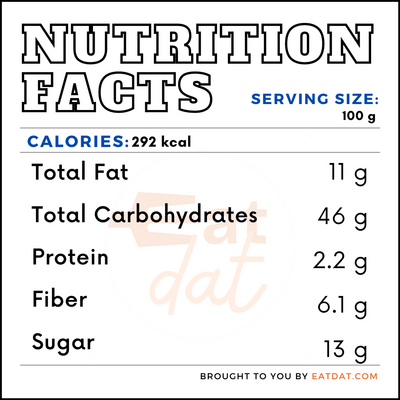
Wasabi
What is Wasabi?
Wasabi is a plant belonging to the mustard and horseradish family. The leaves of this plant are edible and can be eaten raw. Wasabia Japonica is often mistaken for horseradish. This plant is usually cultivated for its roots.
The top varieties of this vegetable include:
- Hon-wasabi (native to the Japanese)
- Seiyo-wasabi
- Hatake-wasabi
- Sawa-wasabi
In 2018, the worldwide market of this plant was valued at $279.7 million and is estimated to grow by 8.7% in the future.
Origin of wasabi
The origin of this vegetable can be traced to Japan around 794 CE. The scientific name of this vegetable is Wasabia Japonica. The terms ‘Wasabia’ and ‘Japonica’ all have Japanese origins. Japan’s oldest encyclopedia of medical plants (known as Honzo-Wamyo) reveals that this plant was first known as Yamaoi, (Yama meaning mountain) for the mountainous geographical area where it was first discovered. Based on the physical appearance and growth region, the initial name evolved into what we know now.
The development of this plant as a food began as far as the Nara period (710-793 AD). In the Mie Prefecture, a Japanese Buddhist monk (Koubou-Daishi) is believed to be the first person to see the bigger picture as he transplanted a cutting of this plant from Mount Koya to the area around the Chuzen-Ji temple. In the Yamaguchi Prefecture, the story goes that after the loss of the battle of Dannoura, in 1185, runaway Heike soldiers took cuttings of this plant from the Kidani-Kyo Gorge. They used the roots to garnish a nice meal for themselves, and also ate the stems and leaves of this plant.
Function
Every part of this plant is useful and has numerous functions. For instance, this plant can be used to prepare sauces and condiments. This plant is also used as a spice or flavoring agent. Components from this plant are even used to develop health products and cosmetics.
Nutrition
In a 100g serving of this food, there are:

This food also has several health benefits, including:
- Prevents food poisoning
- Fights against the bacterial causing peptic ulcers and stomach cancer
- Strengthens the immune system
- Promotes weight loss
- Improves bone and brain health
Commercial production
Japan is the leading producer of this plant, as it thrives well in the climatic conditions of its natural habitat in river valleys. This plant does not require direct sunlight. However, it can only thrive around 4,200-8,200 feet above sea level with an air temperature between 46.4°F (8°C) and 68°F (20°C). Anything more or less than this range would yield loss.
Application
Real wasabi is very expensive, as the plant only thrives in special climatic conditions. Nonetheless, most of these plants are available in a green thick paste made from the combination of mustard, horseradish, and food coloring. Some forms of this product are paste, peas, powder, and roots. All of them last for different periods when left in a pantry or stored in the fridge. The shelf life of each form differs.
This plant’s pastes and powders can be stored in a cool, dark pantry when unopened. Once opened, the paste can last up to twelve months in the refrigerator, and the powder can last half that time. The peas last from 2-3 weeks when unopened, and are better off left in a pantry. Once opened, they should be stored in the fridge. The roots last a day in the pantry and up to a month when refrigerated.
Wasabi recipes
This vegetable blends well with different dishes. Here are some recipes worth trying:
- Teriyaki Glazed Salmon and Wasabi Hollandaise
- Wasabi Guacamole
- Chicken Rice Salad
- Grilled Tuna Burgers With Wasabi Slaw
- Ginger Wasabi Edamame Hummus
FDA Regulation
The FDA does not currently have any regulations for this plant but has comprehensive regulations for vegetables, including definitions, labeling, and nutritional guidelines. They also give standards for the growing, harvesting, packing, and handling of vegetables. The USDA has conducted studies on the nutritional content of wasabi and its related products.
References
Petruzzello, Melissa. “Wasabi.” Britannica.com, Encyclopædia Britannica, Inc., 18 Mar. 2020, www.britannica.com/topic/wasabi.
“Worldwide Wasabi Market Research Report,9 & 2027 | A $590+ Million Industry Opportunity | Markets Insider.” Business Insider, Business Insider, markets.businessinsider.com/news/stocks/worldwide-wasabi-market-research-report-2018-2019-2027-a-590-million-industry-opportunity-1028604492.
Walle, Gavin Van De. “6 Promising Health Benefits of Wasabi.” Healthline.com, Healthline Media, 6 Sept. 2019, www.healthline.com/nutrition/wasabi-benefits.
“CFR – Code of Federal Regulations, Title 21.” Accessdata.fda.gov, U.S Food & Drug Administration, 1 Apr. 2019, https://www.accessdata.fda.gov/scripts/cdrh/cfdocs/cfcfr/CFRSearch.cfm?CFRPart=112
